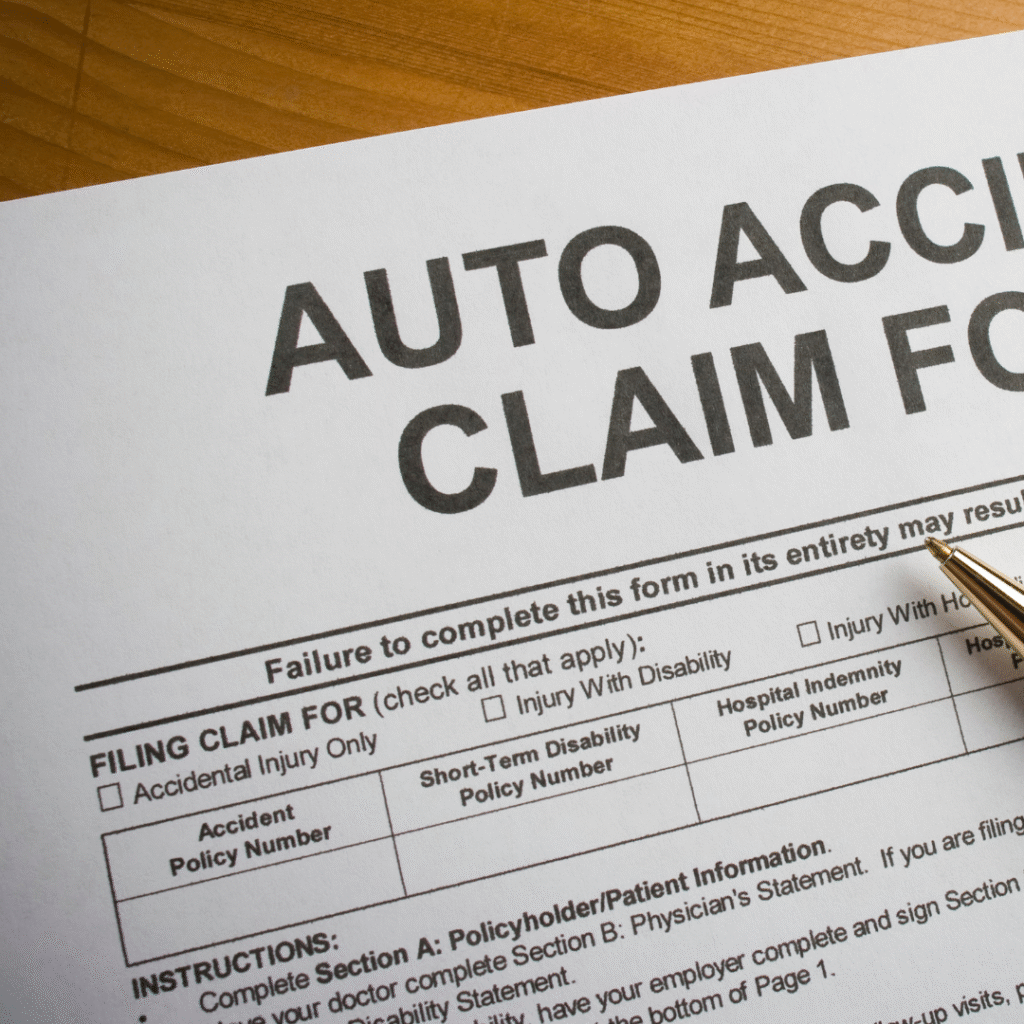Decade-Old Car Crash Reopened as $3 Million Insurance Fraud

October 29, 2025 | JacobiJournal.com – Gujarat insurance fraud investigators have reopened a decade-old fatal car crash after uncovering what authorities describe as a ₹25 crore (≈ $3 million USD) insurance scam. Officials say the case, centered in Gujarat, exposes a coordinated effort to falsify accident reports and life-insurance records. Crash Reclassified After Forensic Review New forensic analysis and witness testimony revealed that the deceased businessman—long assumed to have been the driver—was actually a passenger. Officials say the original accident report was falsified to disguise who was at the wheel, enabling relatives and associates to file a lucrative life-insurance claim. Investigators noted that this finding could be a turning point in the Gujarat insurance fraud case, exposing how falsified crash records and fake IDs fueled one of the state’s largest insurance scams in recent years. Fabricated Evidence, Coordinated Cover-Up According to state police, multiple individuals collaborated to alter medical records, accident diagrams, and identification documents. Investigators are reviewing whether insurance intermediaries or local officials knowingly validated the false claim. High-Value Policy Triggered Decade-Long Deception The ₹25 crore policy was issued through a private insurer in 2015, and payout occurred within months of the crash. Authorities believe proceeds were laundered through shell entities and layered bank accounts to obscure their source. Broader Impact on Fraud Detection Systems Analysts note that the case highlights persistent weaknesses in India’s death-verification process and the limitations of paper-based insurance documentation. Anti-fraud experts are urging insurers to integrate centralized digital claims-tracking systems. “Delayed detection remains a core vulnerability—especially where medical, police, and insurer databases operate in silos,” said a Mumbai-based insurance-risk consultant. Regulatory Response Expected The Insurance Regulatory and Development Authority of India (IRDAI) has requested a full audit of similar high-value payouts from the same insurer. Future reforms may require mandatory biometric verification for all fatal-claim disbursements. For continuing updates on India’s insurance-fraud investigations, visit The Times of India’s Insurance Section. FAQs: Gujarat Insurance Fraud Case Why was the Gujarat insurance fraud car crash case reopened? Investigators discovered new forensic evidence indicating the deceased was a passenger, not the driver, which invalidated the original claim narrative. How much money was allegedly defrauded? Authorities estimate the fraudulent life-insurance payout totaled approximately ₹25 crore (about $3 million USD). Who is leading the current investigation? The Gujarat Police Economic Offences Wing (EOW) is coordinating with the Insurance Regulatory and Development Authority of India (IRDAI). How does this case affect future insurance claims in India? It underscores the need for digital verification, biometric claimant authentication, and integrated fraud-detection systems among insurers. Stay informed and subscribe to JacobiJournal.com for ongoing investigative coverage of global insurance-fraud cases. 🔎 Read More from JacobiJournal.com:
Reality TV Star Steven McBee Sr. Sentenced to 24 Months in Prison for $3.15M Crop Insurance Fraud

October 27, 2025 | JacobiJournal.com — Steven McBee Sr., known from Bravo’s McBee Dynasty: Real American Cowboys, has been sentenced to 24 months in federal prison after being convicted of a multimillion-dollar crop insurance fraud scheme. The U.S. District Court in Kansas City, Missouri, also ordered McBee to pay $4,022,124 in restitution to the federal government. Fraudulent Claims Exposed Between 2018 and 2020, Steven McBee submitted falsified reports to Rain and Hail Insurance, underreporting his corn and soybean yields. These manipulations led to over $3.15 million in improper federal crop insurance payments. The scheme represents a significant abuse of federal agricultural programs and underscores the need for rigorous oversight. From Reality Star to Convicted Fraudster Once celebrated for showcasing his family’s ranching operations on national television, McBee’s fall highlights how high-profile figures can exploit agricultural programs. This case also brings attention to the broader risks of fraud within federally-backed insurance systems. Industry Takeaways Agricultural insurance experts stress that this conviction illustrates the necessity for more robust auditing and verification measures. McBee’s case could serve as a precedent for stricter enforcement and increased penalties for fraudulent claims in crop insurance. For more details on the case, see the People.com report. FAQs: Steven McBee Crop Insurance Fraud What did Steven McBee Sr. do to commit fraud? He underreported his corn and soybean yields to obtain more than $3.15 million in federal crop insurance payments. What penalties did he receive? McBee was sentenced to 24 months in federal prison and must pay $4,022,124 in restitution. Why is this case significant? It highlights potential vulnerabilities in federally-backed crop insurance programs and emphasizes the importance of rigorous oversight. How does this affect the agricultural industry? The case signals a warning to farmers and insurers about the consequences of falsifying records and may lead to stricter auditing procedures. Subscribe to JacobiJournal.com for timely updates on insurance fraud, regulatory enforcement, and investigative reporting. 🔎 Read More from JacobiJournal.com:
Ford Asbestos Lawsuit Dismissed by Ohio Appeals Court

October 24, 2025 | JacobiJournal.com — An asbestos lawsuit against Ford Motor Co. has been dismissed by an Ohio appellate court, which found the product liability claims were improperly filed in state court. The ruling determined that the alleged exposure lacked sufficient connection to Ford’s Ohio operations, marking a significant jurisdictional win for the automaker. Court Reaffirms Jurisdictional Limits in Asbestos Litigation The panel held that the plaintiffs failed to establish sufficient ties between the alleged asbestos exposure and Ford’s Ohio operations, leading to the dismissal of the asbestos lawsuit. The court emphasized that jurisdictional rules under state and federal law prevent forum-shopping in asbestos lawsuits, especially when plaintiffs or exposure incidents occurred outside Ohio. Legal experts note that this Ford asbestos lawsuit decision reinforces the tightening standards for product liability jurisdiction in complex toxic tort cases. Ford’s Legal Victory Reflects Tightening Product Liability Landscape Ford’s defense argued that allowing the case to proceed in Ohio would violate due process standards. The appellate court agreed, reinforcing strict venue and jurisdiction criteria that often protect manufacturers from out-of-state claims. The ruling is consistent with a growing judicial trend emphasizing nexus and forum appropriateness in complex tort actions. For insurers and corporate counsel, this case serves as a reminder that forum selection challenges remain a potent defense strategy in high-liability product cases. Implications for Insurers and Product Liability Defendants The decision highlights how jurisdictional control can affect insurance exposure and settlement dynamics in asbestos-related litigation. Insurers underwriting historical exposure policies may now see reduced defense obligations when jurisdiction is successfully contested. Industry observers suggest this may influence future coverage strategies, particularly in multi-state liability scenarios. For additional legal analysis, visit Bloomberg Law’s coverage of product liability jurisdictional trends. FAQs: Ford Asbestos Lawsuit Dismissal (2025) What was the basis for the Ford asbestos lawsuit dismissal? The Ohio appeals court found the case lacked sufficient jurisdictional ties to Ohio, meaning the lawsuit should not have been filed in that venue. How does this ruling affect future asbestos litigation? It reinforces stricter venue requirements, discouraging plaintiffs from filing in states where the alleged exposure did not occur. Does the decision impact insurance carriers? Yes. Insurers may face reduced defense costs when jurisdictional challenges succeed, limiting their exposure in unrelated forums. What precedent does this set for corporate defendants? It strengthens the argument for corporations to challenge out-of-state filings, particularly in legacy asbestos and toxic tort cases. Subscribe to JacobiJournal.com for weekly updates on insurance litigation, appellate rulings, and liability enforcement. 🔎 Read More from JacobiJournal.com:
GEICO Faces Lawsuit for Failing to Arbitrate Auto Accident Claim

October 22, 2025 | JacobiJournal.com — A new lawsuit filed against Geico Insurance Co. accuses the carrier of failing to engage in mandatory arbitration over a disputed auto accident claim — a move that could expose the insurer to allegations of bad-faith handling and breach of contract. The policyholder claims Geico refused to participate in arbitration proceedings required under the policy’s uninsured/underinsured motorist (UM/UIM) provisions. The suit argues this refusal caused financial and procedural harm, forcing the claimant to pursue damages through litigation instead of arbitration. Policyholder Says Geico Ignored Arbitration Obligation According to the complaint, Geico allegedly failed to respond to multiple arbitration requests after the insured sought compensation for injuries and property loss from an underinsured driver. The claimant contends that arbitration was explicitly required under the contract’s dispute-resolution clause. Legal experts say this case highlights how procedural lapses in arbitration compliance can expose insurers to extra-contractual liability, especially if courts find the insurer acted unreasonably or in bad faith. Potential Exposure for Insurer Compliance Failures Analysts note that arbitration disputes are increasingly common as insurers face growing backlogs in claim resolutions and pressure from policyholders to honor contractually mandated procedures. If the court finds that Geico deliberately avoided arbitration, the insurer could face penalties, including statutory interest, attorney’s fees, and punitive damages. “This kind of claim tests the boundaries of insurer obligations under arbitration clauses,” said a policy litigation attorney. “Courts generally enforce arbitration rights strictly—ignoring them can backfire.” Broader Industry Implications The lawsuit could influence how insurers handle arbitration provisions nationwide. Many state insurance codes and consumer-protection statutes require carriers to act in good faith when processing claims, including adhering to dispute-resolution timelines. Industry observers expect the case to prompt internal compliance reviews within major auto insurers to ensure adherence to both policy language and arbitration laws. For more on arbitration obligations under insurance law, visit the American Bar Association’s Insurance Law Section. FAQs: Geico Arbitration Lawsuit Over Auto Claim 2025 What is the Geico arbitration lawsuit about? A policyholder alleges that Geico failed to participate in mandatory arbitration for a disputed auto accident claim under their insurance contract. Why is arbitration important in insurance disputes? Arbitration clauses streamline claim resolution and reduce litigation costs. Ignoring these provisions can expose insurers to breach-of-contract claims. What legal risks does Geico face in this case? If found liable, Geico could face bad-faith penalties, attorney’s fees, and damages for refusing to comply with arbitration requirements. How might this case affect the insurance industry? It could prompt stricter enforcement of arbitration clauses and internal compliance reviews among national insurers. Stay current on insurer litigation, coverage disputes, and arbitration trends — subscribe to JacobiJournal.com for weekly expert updates. 🔎 Read More from JacobiJournal.com:
NICB Reports 49% Spike in Insurance Fraud Tied to Identity Theft

October 20, 2025 | JacobiJournal.com — The National Insurance Crime Bureau (NICB) has reported a sharp 49% increase in insurance fraud cases involving identity theft and synthetic identities, marking one of the most significant fraud surges in recent years. Investigators say fraudsters are using stolen or fabricated identities to file false life insurance, healthcare reimbursement, and auto claim submissions. The trend reflects how cyber-enabled identity manipulation is fueling traditional insurance fraud schemes, often making detection harder for carriers and regulators alike. Synthetic Identities Driving Sophisticated Claim Schemes According to NICB analysts, many of the new cases involve synthetic identities—combinations of real and fake personal data used to create entirely new profiles. These synthetic claimants have been tied to false medical reimbursement requests and policies opened with fabricated beneficiaries. Experts warn that because these profiles can pass basic identity checks, insurers are increasingly vulnerable to digital-first fraud networks that exploit weak authentication processes. Life and Health Insurers See Growing Exposure Life and health insurance lines appear most affected by this year’s surge, with fraudulent actors targeting beneficiary databases and policy applications. NICB’s 2025 midyear review found that identity-based fraud has expanded from consumer policy abuse to organized criminal activity, sometimes involving multiple insurers. “These schemes often blend cybercrime with traditional claim fraud,” an NICB spokesperson said. “As digital verification expands, so does the surface area for exploitation.” Regulatory and Industry Response Emerging Regulators are responding by encouraging insurers to adopt multi-factor verification systems and cross-database fraud detection models. Insurers are also collaborating with NICB and law enforcement to share intelligence on synthetic claimants and compromised identity clusters. Industry observers predict that insurers who fail to integrate fraud analytics and biometric verification tools will face greater exposure to multi-claim identity manipulation. For the official NICB fraud trend report, visit the National Insurance Crime Bureau’s Fraud Resource Center. FAQs: Insurance Fraud Identity Theft Trends 2025 What did NICB report about identity theft and insurance fraud? NICB documented a 49% increase in insurance fraud tied to stolen or synthetic identities across multiple insurance sectors. Which types of insurance are most affected? Life and health insurance claims, along with some auto and property lines, are seeing the fastest rise in identity-linked fraud. What makes synthetic identity fraud difficult to detect? Synthetic identities blend real and fake data, often passing basic verification systems and enabling multiple false claims under different personas. How can insurers respond to this threat? Experts recommend biometric verification, AI-powered fraud analytics, and cross-industry data sharing through organizations like NICB. Stay informed on fraud enforcement and insurer liability —subscribe to JacobiJournal.com for expert weekly insights. 🔎 Read More from JacobiJournal.com:
Louisiana Court Revives LUBA Fraud Case in Workers’ Compensation Dispute

October 17, 2025 | JacobiJournal.com — LUBA fraud case revival gains momentum as a Louisiana appellate court has reinstated a lawsuit brought by LUBA Workers’ Comp and TruCare Home Health LLC against former employee Rebecca Sears, marking a win for insurers seeking to curb false workers’ compensation claims. The lawsuit alleges that Sears made misleading statements to medical providers to prolong benefits tied to a 2014 workplace injury. The court’s decision reverses an earlier dismissal, allowing the case to move forward. Appeals Court Finds Grounds for Reconsideration The panel concluded that in the LUBA fraud case, LUBA and TruCare presented enough factual support to suggest Sears may have intentionally exaggerated her injury-related limitations. That finding satisfied the threshold for reviving the LUBA fraud case, which will now proceed to further evidentiary review. Legal observers say the outcome signals that fraud allegations in compensation disputes deserve full examination before dismissal. Insurers Push Back on Questionable Claims The ruling reflects a growing trend among insurers to challenge questionable workers’ compensation claims through aggressive litigation. LUBA’s persistence demonstrates an industry-wide effort to reclaim funds lost to fraudulent activity. According to analysts, Louisiana’s stance reinforces national trends toward tighter scrutiny of claimant conduct and greater accountability in medical documentation. Broader Impact on Compensation Enforcement The decision may encourage both insurers and state regulators to adopt stronger investigative protocols. Courts appear increasingly willing to weigh in when inconsistencies suggest intentional deception or overstatement of medical conditions. By reviving this appeal, the court has strengthened the balance between employee protection and insurer integrity, a recurring issue in compensation litigation. Learn more about fraud enforcement in workers’ compensation programs from the National Insurance Crime Bureau (NICB). FAQs: LUBA Fraud Case Appeal 2025 Who are the parties in the LUBA fraud case? LUBA Workers’ Comp and TruCare Home Health LLC are suing former employee Rebecca Sears for allegedly making false statements to extend benefits. What did the Louisiana appeals court decide? The court revived the insurers’ fraud case, allowing it to continue after a previous dismissal. Why is this case significant for insurers? It reinforces insurers’ rights to pursue compensation fraud claims and signals judicial support for thorough fraud review. Where can readers find more about compensation fraud trends? Visit the National Insurance Crime Bureau (NICB) for verified industry data and prevention initiatives. Stay informed on the latest insurance and fraud litigation—subscribe to JacobiJournal.com for expert analysis and weekly updates. 🔎 Read More from JacobiJournal.com:
Eleventh Circuit Clarifies Insurer’s Duty to Defend in Malpractice Coverage Case

October 15, 2025 | JacobiJournal.com — The Eleventh Circuit Court of Appeals has reaffirmed that insurers cannot easily escape their duty to defend when a malpractice complaint raises allegations potentially covered by professional liability insurance. The court’s decision underscores how narrowly exclusions must be applied when determining an insurer’s defense obligations toward attorneys and law firms. Court Rejects Overbroad Use of Policy Exclusions In the dispute, an insurer sought to avoid defending an attorney accused of mishandling a client matter, citing conflict-of-interest and misappropriation exclusions. The appellate panel disagreed, holding that such exclusions did not clearly eliminate coverage for the allegations presented. The judges emphasized that the duty to defend is broader than the duty to indemnify, meaning insurers must step in as long as any claim in the complaint may fall within coverage. This decision aligns with the Eleventh Circuit’s consistent stance favoring insureds in ambiguous defense scenarios. Implications for Professional Liability Coverage Legal analysts note that the ruling strengthens the protection afforded to lawyers under professional liability policies, particularly in jurisdictions governed by Eleventh Circuit precedent. The case signals to insurers that attempts to rely on vaguely worded exclusions may fail where the underlying facts could still support coverage. “This opinion is another reminder that insurers carry a heavy burden when attempting to disclaim their defense obligations,” one coverage attorney explained. “Courts are increasingly unwilling to let carriers off the hook based on speculative exclusions.” Broader Context for Insurers and Law Firms The Eleventh Circuit’s decision follows a growing national trend requiring insurers to honor defense commitments when policy wording is unclear. For law firms, the ruling highlights the importance of reviewing policy terms, especially exclusions tied to conflicts or client fund handling. Industry observers predict that this case will be cited in upcoming disputes involving the scope of an insurer’s duty to defend under professional liability and errors-and-omissions policies. For a full summary of recent federal coverage cases, visit the Insurance Law Center at Cornell Law School. FAQs: Eleventh Circuit Insurer Duty to Defend Ruling 2025 What did the Eleventh Circuit decide about insurer obligations? The court ruled that the insurer must defend the attorney and firm in a malpractice lawsuit because the claims could fall within the scope of the policy. Why did the insurer try to deny coverage? It cited exclusions related to conflict of interest and misappropriation, but the court found these did not clearly apply to all alleged conduct. How does this affect other law firms with similar policies? It sets a strong precedent favoring insureds by confirming that any doubt in coverage should be resolved in favor of providing a defense. Where can readers learn more about insurer defense duties? Readers can explore coverage principles at Cornell Law’s Insurance Law Center. Stay informed on the latest insurer defense rulings — subscribe to JacobiJournal.com for weekly coverage of federal appellate decisions. 🔎 Read More from JacobiJournal.com:
Ohio Employer Ordered to Pay Restitution for Workers’ Comp Lapse

October 13, 2025 | JacobiJournal.com — An Ohio business owner has been ordered to pay $15,944 in restitution after investigators found that his company operated without mandatory workers’ compensation insurance. The case underscores how aggressively state authorities pursue coverage lapses that leave workers unprotected. The individual, who owns FloodStar Restoration—a water-removal and restoration service—admitted to operating without coverage for an extended period. A local court imposed the restitution order and a two-year probation term, warning that future noncompliance could trigger harsher penalties. Workers’ Compensation Compliance: More Than a Technicality Ohio law requires employers to maintain continuous workers’ compensation insurance. When coverage lapses, any injury sustained by an employee becomes the employer’s direct financial responsibility. This can lead to restitution penalties, civil lawsuits, and even criminal charges in severe cases. Maintaining compliance helps employers avoid costly restitution and protect their workforce. The FloodStar case demonstrates that even small or midsize businesses are not exempt from scrutiny. Lapses caused by unpaid premiums, administrative oversights, or misclassification of workers are treated as violations rather than mistakes. The Real Cost of Letting Coverage Expire Allowing coverage to lapse may seem minor, but the financial and reputational fallout can be substantial: Ohio regulators have continued to emphasize compliance enforcement as a public safety measure, ensuring that injured workers have guaranteed access to benefits and medical care. Compliance Tips for Employers Monitor premium schedules. Late or missed payments can trigger a lapse. Employers are encouraged to review their current policies regularly and seek guidance from certified insurance professionals to prevent lapses. Visit the Ohio Bureau of Workers’ Compensation for official guidance, employer tools, and compliance assistance. FAQs: Ohio Workers’ Compensation Lapse What happens when an Ohio employer’s workers’ compensation coverage lapses? The employer becomes personally responsible for any workplace injury costs and may face restitution orders or criminal penalties. Can coverage be reinstated retroactively? No. Once a lapse occurs, reinstatement only applies from the date the employer becomes compliant again. Are small businesses treated differently under Ohio law? No. All employers, regardless of size, must maintain continuous coverage if they employ one or more workers. What should an employer do after receiving a noncompliance notice? They should immediately contact the state’s workers’ compensation agency, settle outstanding payments, and submit proof of compliance to avoid prosecution. Stay informed on cases like this by subscribing to JacobiJournal.com for weekly updates on workers’ compensation enforcement, compliance trends, and employer risk management insights. 🔎 Read More from JacobiJournal.com:
Pennsylvania Insurance Agent Faces Investment and Premium Fraud Charges

October 10, 2025 | JacobiJournal.com — Investment fraud charges have been filed against a western Pennsylvania insurance agent, Chad Skena, who allegedly defrauded a longtime client out of $75,000 by promising an investment in his own insurance agency that never materialized. Authorities stated that the funds were misappropriated for personal use, furthercompounding earlier allegations tied to premium theft. According to prosecutors, Skena persuaded the client that the investment would yield steady returns and expand the business’s operations. However, investigators later found no such business accounts or transactions related to the purported investment. Prior Allegations of Premium Theft Resurface Court documents indicate that Skena previously faced charges for diverting insurance premium payments intended for legitimate policy coverage. Victims in those earlier cases reported lapses in their insurance protection after discovering their payments were never forwarded to carriers. These renewed allegations suggest a pattern of financial deception, combining both investment fraud and insurance-related misappropriation — a serious concern for regulators monitoring agent conduct in Pennsylvania. Regulators and Prosecutors Tighten Oversight The Pennsylvania Department of Insurance and the Office of Attorney General have both intensified efforts to identify fraudulent financial practices within licensed agencies. Officials emphasized that the state’s licensing system includes disciplinary measures, from license revocation to criminal prosecution, depending on the severity of the fraud. To learn more about Pennsylvania’s agent fraud prevention programs, visit the Pennsylvania Insurance Department. How Victims Can Respond to Agent Misconduct Victims of suspected agent fraud are encouraged to report violations directly to the state insurance fraud bureau. Key actions include: These steps can help recover losses and support the state’s broader fraud prevention efforts. FAQs: Pennsylvania Insurance Agent Investment Fraud Who is the insurance agent accused of investment fraud? Chad Skena, a western Pennsylvania agent, is charged with defrauding a client of $75,000 under a false investment scheme. What previous charges does he face? Skena was previously charged with theft of insurance premium payments that left some clients without valid coverage. How does Pennsylvania regulate insurance agents? The Pennsylvania Insurance Department oversees licensing and disciplinary actions, including fraud investigations and revocations. What should consumers do if they suspect agent fraud? Report suspected misconduct directly to the Insurance Department and maintain documentation for potential recovery or prosecution support. Stay informed on breaking fraud and insurance litigation cases. Subscribe now to JacobiJournal.com for verified updates on insurance and investment fraud cases. 🔎 Read More from JacobiJournal.com:
Texas Insurance Agent Fraud Leads to $300K Premium Theft (2025)

October 8, 2025 | JacobiJournal.com — Insurance agent fraud in Texas has led to the conviction of Carlyle Poindexter, who pleaded guilty to conspiracy to commit wire fraud after admitting to overcharging clients nearly $300,000 in premium payments. The fraudulent scheme, which spanned several years, involved collecting inflated premiums from policyholders and diverting the excess funds for personal use. Premium Theft Scheme Uncovered Federal investigators revealed that Poindexter, who operated under a now-defunct insurance firm, intentionally manipulated policy costs and billing records to inflate customer invoices — a clear example of insurance agent fraud. The scheme was uncovered after multiple clients reported inconsistent charges and missing refund checks. According to court documents, Poindexter used false representations and fraudulent payment accounts to disguise premium theft, funneling funds through a series of personal and business accounts. The Texas Department of Insurance Fraud Unit assisted federal authorities in tracing the misappropriated funds. Legal Consequences and Industry Impact Poindexter now faces a potential prison sentence of up to 20 years under federal wire fraud statutes, along with restitution to affected policyholders, following his involvement in insurance agent fraud. State regulators have also moved to revoke his insurance license permanently. Industry experts warn that premium diversion schemes—in which agents pocket premiums instead of forwarding them to insurers—remain one of the most damaging forms of insurance fraud, eroding public trust and raising compliance costs for legitimate agents. Enforcement Actions Signal Stronger Oversight Authorities emphasized that this case underscores the state’s increased vigilance against insurance fraud. “Texas regulators are sending a clear message—misusing client premiums will lead to federal prosecution,” said one enforcement official familiar with the investigation. The case serves as a reminder for consumers to verify agent licensing and check policy statements directly with insurers to ensure payments are properly credited. Read the full coverage here for detailed case information. FAQs: Texas Insurance Agent Fraud What is premium theft in insurance? Premium theft occurs when an agent collects premium payments from clients but fails to remit them to the insurance company, keeping the funds for personal gain. How can policyholders detect insurance fraud? Clients should review billing statements carefully, confirm policy numbers directly with the insurer, and report any suspicious discrepancies to the state insurance department. What penalties apply for insurance agent fraud in Texas? Convictions for wire or insurance fraud can lead to up to 20 years in prison, substantial fines, and restitution to victims. How can regulators prevent premium diversion schemes? Enhanced audits, electronic payment tracking, and real-time reporting tools can help regulators and insurers identify premium theft earlier and deter repeat offenses. Stay informed — subscribe to JacobiJournal.com for more verified updates on insurance and compensation fraud enforcement. 🔎 Read More from JacobiJournal.com: